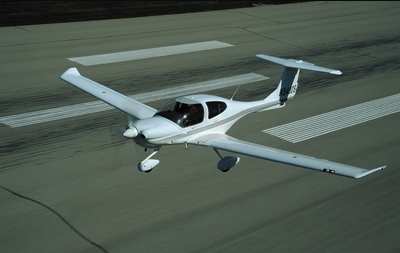Aero-Tips!
A good pilot is always learning -- how many times have you heard
this old standard throughout your flying career? There is no truer
statement in all of flying (well, with the possible exception of
"there are no old, bold pilots.") It's part of what makes aviation
so exciting for all of us... just when you think you've seen it
all, along comes a scenario you've never imagined.
Aero-News has called upon the expertise of Thomas P. Turner,
master CFI and all-around-good-guy, to bring our readers -- and us
-- daily tips to improve our skills as aviators, and as
representatives of the flying community. Some of them, you may have
heard before... but for each of us, there will also be something we
might never have considered before, or something that didn't
"stick" the way it should have the first time we memorized it for
the practical test.
It is our unabashed goal that "Aero-Tips" will help our readers
become better, safer pilots -- as well as introducing our
ground-bound readers to the concepts and principles that keep those
strange aluminum-and-composite contraptions in the air... and allow
them to soar magnificently through it.
Look for our daily Aero-Tips segments, coming each day to you
through the Aero-News Network. Suggestions for future Aero-Tips are
always welcome, as are additions or discussion of each day's tips.
Remember... when it comes to being better pilots, we're all in this
together.
Aero-Tips 04.02.06
A number of wheel fires resulting from repetitive or overly
aggressive braking in Cirrus airplanes (see FAA Special Airworthiness Information
Bulletin CE-60-30) reminds us that all aircraft brakes
absorb tremendous stress and can get very hot if overtaxed.
No Anti-Lock Systems Here
The earliest airplanes had no brakes. Of course, they had
tailskids (pretty effective brakes in their own right), they flew
from grass airstrips (more wheel friction), rudders were typically
more effective, and they generally took off and landed into the
wind. Pilots also learned to use the adverse yaw of (typically
large) ailerons with little wing washout for directional
control.
About the time paved runways came into vogue (the late 1920s)
brakes began to appear on airplanes. Early brakes weren’t
terribly effective by modern standards, but most pilots were
trained to maneuver without them. The tendency of tailwheel
airplanes to nose over with aggressive braking quickly weeded out
students and flying cadets that didn’t get the message.
Eventually modern, effective brakes emerged, capable of stopping
far heavier, faster airplanes with much more idle-power thrust.
Stopping power for high wheel speeds and inertia requires a great
deal of friction—with the by-product of heat. Side-effects
can loosen brake seals, leaking flammable brake fluid onto hot
brake discs. Automotive-style anti-lock braking systems have not as
yet made it to the lightplane market. Now that free-castering,
non-steerable nosewheels are making a comeback (Cirrus, Diamond and
others) we depend even more on brakes to maneuver fast, powerful
airplanes on smooth, paved surfaces.

The Slow Down Low Down
As SAIB CE-60-30 suggests, pilots must be careful to avoid
overheating brakes. Loss of braking effectiveness and, in extreme
cases, fires may result if we use brakes too much. Taxi slowly and
use brakes sparingly. Avoid high-power taxi. Tap brakes when
needed, don’t ride the brakes or stomp down hard. Anticipate
the need to slow down and use power accordingly. After landing,
slow until rudder effectiveness is reduced before applying brakes
unless runway length or conditions require otherwise. If
you’ve had to hit the brakes hard, sit in place a minute or
two for them to cool before resuming taxi.
Aero-tip of the day: Airplane brakes are very
susceptible to overheating. Use brakes sparingly and
expertly.
 ANN's Daily Aero-Term (04.20.24): Light Gun
ANN's Daily Aero-Term (04.20.24): Light Gun Aero-News: Quote of the Day (04.20.24)
Aero-News: Quote of the Day (04.20.24) ANN's Daily Aero-Linx (04.21.24)
ANN's Daily Aero-Linx (04.21.24) Aero-News: Quote of the Day (04.21.24)
Aero-News: Quote of the Day (04.21.24) ANN's Daily Aero-Term (04.21.24): Aircraft Conflict
ANN's Daily Aero-Term (04.21.24): Aircraft Conflict



